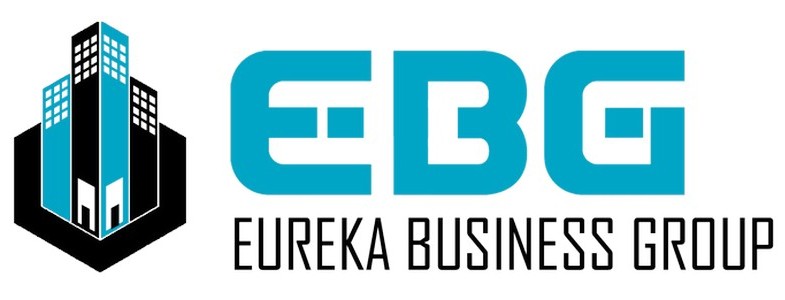- Home
- Industrial
- Industrial Investors Resources
- Top 10 Benefits of Investing in Industrial Flex Properties!
Top 10 Benefits of Investing in Industrial Flex Properties!
Industrial real estate has been gaining traction in recent years, with industrial flex properties standing out as a particularly attractive option for investors. Flex properties, known for their versatile use, can accommodate a wide range of tenants, from offices to warehouses, and even light manufacturing. As demand for adaptable and multifunctional spaces grows, so does the appeal of investing in industrial flex properties. Below are the top 10 benefits of making this smart investment.
1. Versatility and Adaptability
One of the standout features of industrial flex properties is their inherent flexibility. Unlike traditional industrial buildings that may be purpose-built for manufacturing or storage, flex spaces can easily be adapted to meet various needs. Whether it’s a company looking for office space, a distribution hub, or a light manufacturing facility, flex properties offer the versatility to accommodate different types of businesses. This adaptability reduces vacancy risk, as the property can easily be repurposed for new tenants.
Why It Matters:
- Higher tenant demand: A broader range of businesses can use the space, keeping vacancy rates low.
- Easier tenant transitions: The flexibility of the space allows for quicker adaptation when tenant needs change.
2. High Demand in E-commerce and Logistics
The rise of e-commerce has driven demand for industrial properties, particularly those that can serve as distribution and fulfillment centers. Flex properties are ideally positioned to meet this need due to their combination of office and warehouse space. Companies need spaces that can handle both administrative tasks and storage or distribution operations under one roof, and industrial flex spaces fit the bill perfectly.
Why It Matters:
- Growing e-commerce sector: As e-commerce continues to expand, so does the need for fulfillment and logistics spaces.
- Quick market adaptability: Flex spaces can easily convert to accommodate both office work and logistical operations, making them a prime choice for online retailers.
3. Steady Cash Flow
Industrial flex properties often attract long-term tenants due to their adaptability and location in business-friendly zones. With the ability to host multiple businesses within the same building, owners can enjoy steady, reliable cash flow from diversified tenant bases. This is particularly beneficial during economic downturns, where some sectors may perform better than others, ensuring that not all tenants are affected at once.
Why It Matters:
- Reduced vacancy risks: The adaptability and tenant diversity lead to more consistent occupancy.
- Reliable rental income: Long-term leases and diversified tenants can provide stability and predictability in rental income.
4. Cost-Effective Maintenance
Compared to other commercial real estate types, industrial flex properties tend to have lower maintenance costs. The simplicity of their design, often focused on functionality over aesthetics, means fewer expensive finishes and materials to maintain. The structure itself is also typically easier to update or modify, reducing costs for both landlords and tenants.
Why It Matters:
- Lower operating costs: Minimalistic designs and easy-to-modify spaces reduce repair and maintenance expenses.
- Higher profit margins: Lower operational costs translate into higher returns on investment.
5. Attractive Investment in Emerging Markets
Industrial flex properties are increasingly popular in secondary and tertiary markets, where manufacturing, distribution, and office needs are growing but real estate prices remain more affordable. These markets offer excellent opportunities for investors looking to get into industrial real estate without the high costs of prime urban areas.
Why It Matters:
- Affordable entry points: Investors can acquire industrial flex properties in emerging markets at a lower price than in major metropolitan areas.
- Appreciation potential: As businesses expand into these regions, property values may increase, providing capital appreciation over time.
6. Strong Long-Term Demand
The need for industrial flex properties is projected to grow in the coming years. Businesses require adaptable spaces for a variety of functions, and the rise of sectors like technology, healthcare, and e-commerce is pushing demand for multifunctional industrial spaces. This long-term demand ensures that industrial flex properties will continue to be a valuable asset in the real estate portfolio.
Why It Matters:
- Future-proof investment: The flexibility of these properties makes them suitable for industries experiencing long-term growth, such as tech and logistics.
- Increased value over time: With demand expected to grow, industrial flex properties have the potential to appreciate in value significantly.
7. Diverse Tenant Mix
Unlike traditional single-use industrial spaces, flex properties can accommodate multiple tenants with varying needs. This diversity not only increases demand for the space but also mitigates risk for property owners. Should one tenant vacate, the property owner is not left entirely without income, as other tenants continue to provide cash flow.
Why It Matters:
- Risk diversification: A diverse tenant mix reduces the risk of vacancy or lease default.
- Increased tenant retention: A variety of space configurations and uses can cater to different business needs, improving tenant satisfaction and retention.
8. Ease of Financing
Industrial flex properties are often seen as lower-risk investments, making them more attractive to lenders. The combination of long-term leases, steady cash flow, and rising demand for industrial spaces creates favorable conditions for securing financing. In addition, investors may find that financial institutions are more willing to provide favorable loan terms for these types of properties due to their perceived stability and potential for appreciation.
Why It Matters:
- Attractive financing options: Lenders view industrial flex properties as lower risk, leading to better loan terms.
- Easier access to capital: Investors may find it easier to secure financing for flex properties compared to other types of real estate.
9. Higher Yields
Industrial real estate, particularly flex properties, often delivers higher yields compared to other commercial property types such as office or retail. The combination of lower maintenance costs, high tenant demand, and long-term leases makes industrial flex properties an attractive option for investors looking for a higher return on investment (ROI).
Why It Matters:
- Higher returns: Industrial flex properties typically offer better yields than other commercial real estate options.
- Efficient use of capital: With higher rental income and lower expenses, investors can maximize their returns.
10. Reduced Competition
While industrial real estate is gaining popularity, flex properties remain a relatively niche market compared to office or retail real estate. This reduced competition means that savvy investors can often find undervalued properties or enjoy less competition when bidding on new developments. Additionally, flex properties tend to have longer lease agreements, leading to fewer turnovers and less pressure to constantly seek new tenants.
Why It Matters:
- More opportunities: With fewer investors targeting industrial flex properties, investors have more room to find lucrative deals.
- Less tenant turnover: Longer leases mean fewer vacancies and more stable income over time.
Conclusion
Investing in industrial flex properties presents a compelling opportunity for real estate investors. With the versatility to attract a wide range of tenants, the ability to adapt to market shifts, and steady demand from sectors like e-commerce, these properties offer a blend of stability, profitability, and long-term growth potential. Whether you’re an experienced investor looking to diversify your portfolio or someone new to industrial real estate, industrial flex properties provide a smart, adaptable, and high-yield investment option.



